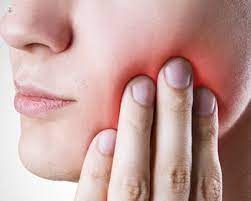Understanding the human body’s intricacies can be fascinating, especially when it comes to the complex network of nerves that control our senses and movements. One particularly interesting nerve is the trigeminal nerve. This blog post will explore the functions and disorders associated with the trigeminal nerve. We’ll break down its roles in everyday activities and discuss common problems that can occur. By the end of this post, you’ll have a clear understanding of how this crucial nerve works and what happens when it malfunctions.
What is the Trigeminal Nerve?
The trigeminal nerve, also known as cranial nerve V, is a major nerve in the human body. It is responsible for sensation in the face and motor functions such as biting and chewing. This nerve splits into three branches, each serving different parts of the face.
The Three Branches
- Ophthalmic Branch (V1):
- This branch controls sensations in the forehead, scalp, and upper eyelids.
- It plays a role in the blink reflex, which helps protect the eyes from foreign objects.
- Disorders in this branch can cause numbness or pain around the eyes and forehead.
- Maxillary Branch (V2):
- This branch affects the cheeks, upper lip, and nasal cavity.
- It is crucial for sensing stimuli like touch, pain, and temperature in these areas.
- Issues in this branch can lead to discomfort or loss of sensation in the mid-face region.
- Mandibular Branch (V3):
- This branch controls the lower jaw, lower lip, and parts of the tongue.
- It is essential for chewing and other jaw movements.
- Problems here can cause difficulty in chewing and speaking.
Functions of the Trigeminal Nerve
The trigeminal nerve serves several critical functions that are vital for daily life. Let’s explore these functions in more detail.
Sensory Functions
The trigeminal nerve is primarily responsible for facial sensations. It helps us feel touch, pain, and temperature changes. This sensory feedback is essential for protecting the face from harm, such as pulling away from a hot surface.
Motor Functions
In addition to sensory roles, the trigeminal nerve also controls certain motor functions. The mandibular branch plays a significant part in chewing and swallowing. It helps coordinate the muscles needed to break down food.
Reflex Actions
The trigeminal nerve is involved in reflex actions like blinking and sneezing. These reflexes protect the eyes and respiratory system from irritants. For example, when something approaches the eye, the ophthalmic branch triggers a blink response.
Common Disorders of the Trigeminal Nerve
Unfortunately, the trigeminal nerve can be affected by several disorders. These conditions can cause significant discomfort and impact quality of life.
Trigeminal Neuralgia
Trigeminal neuralgia is a chronic pain condition affecting the trigeminal nerve. It causes severe, shooting pain in the face, often triggered by everyday activities like brushing teeth or talking. Treatments include medication, injections, and sometimes surgery.
Neuropathy
Neuropathy involves damage to the trigeminal nerve, leading to pain, numbness, or tingling. It can result from various factors, including diabetes, injury, or infections. Specialized clinics offer treatments, such as the treatment of neuropathy in Oklahoma, to manage symptoms and improve nerve function.
Herpes Zoster (Shingles)
Herpes zoster can infect the trigeminal nerve, causing painful rashes and long-term nerve pain. Early antiviral treatment can help reduce the severity and duration of symptoms.
Diagnosing Trigeminal Nerve Disorders
Diagnosing issues with the trigeminal nerve often involves several steps. Early diagnosis is key to effective treatment.
Medical History and Physical Exam
Doctors typically start with a thorough medical history and physical examination. They look for symptoms like facial pain or numbness and ask about any activities that trigger these sensations.
Imaging Tests
Imaging tests like MRI or CT scans help visualize the trigeminal nerve and surrounding structures. These tests can identify any abnormalities or underlying conditions that may be causing symptoms.
Nerve Conduction Studies
Nerve conduction studies measure how well signals travel through the trigeminal nerve. This test can help pinpoint the location and extent of nerve damage.
Treatment Options
Several treatment options are available for trigeminal nerve disorders. The choice of treatment depends on the specific condition and its severity.
Medications
Medications are often the first line of treatment. Pain relievers, anti-inflammatory drugs, and anticonvulsants can help manage symptoms. In some cases, antidepressants may also be prescribed to relieve pain.
Physical Therapy
Physical therapy can improve muscle strength and coordination, especially for motor function disorders. Specific exercises and techniques help alleviate pain and restore normal function.
Surgical Interventions
Surgical options are considered when other treatments fail. Procedures like microvascular decompression or nerve blocks can provide long-term relief. These surgeries aim to reduce pressure on the trigeminal nerve or interrupt pain signals.
Living with Trigeminal Nerve Disorders
Living with trigeminal nerve disorders can be challenging, but several strategies can help manage symptoms and improve quality of life.
Lifestyle Modifications
Simple lifestyle changes, such as avoiding triggers and practicing good oral hygiene, can make a significant difference. Stress management techniques like meditation and yoga can also help reduce symptom severity.
Support Groups
Joining support groups can provide emotional and practical support. Connecting with others who have similar experiences can be incredibly comforting and empowering.
Regular Follow-ups
Regular follow-ups with healthcare providers ensure that treatment plans are working and allow for adjustments as needed. Consistent monitoring can help prevent complications and promote better outcomes.
Conclusion
The trigeminal nerve plays a crucial role in our daily lives, from sensing touch and pain to enabling chewing and facial movements. Understanding its functions and recognizing the signs of disorders can help in seeking timely treatment and improving quality of life. If you experience symptoms related to trigeminal nerve issues, consult a healthcare professional for a proper diagnosis and treatment
Keep an eye for more news & updates on Spicy Rranny!
